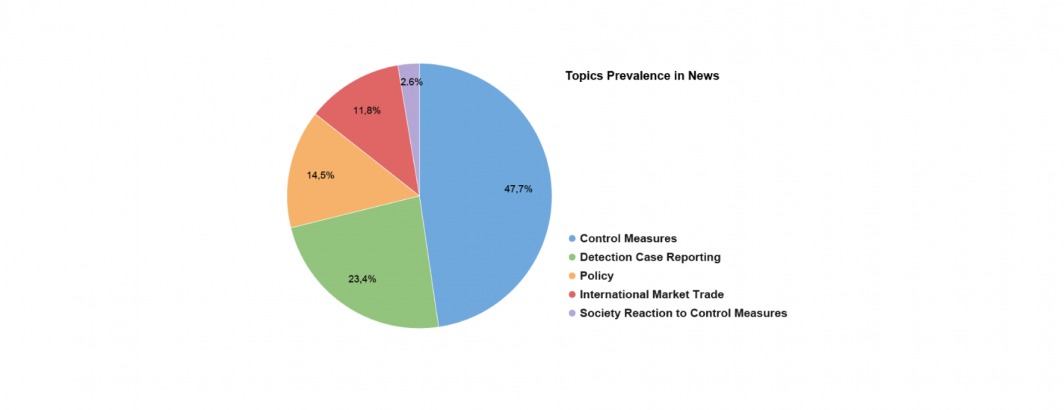
This study incorporates GDELT in scanning for global news mentions of African Swine Fever:
SARS-CoV-2 has clearly shown that efficient management of infectious diseases requires a top-down approach which must be complemented with a bottom-up response to be effective. Here we investigate a novel approach to surveillance for transboundary animal diseases using African Swine (ASF) fever as a model. We collected data both at a population level and at the local level on information-seeking behavior respectively through digital data and targeted questionnaire-based surveys to relevant stakeholders such as pig farmers and veterinary authorities. Our study shows how information-seeking behavior and resulting public attention during an epidemic, can be identified through novel data streams from digital platforms such as Wikipedia. Leveraging attention in a critical moment can be key to providing the correct information at the right moment, especially to an interested cohort of people. We also bring evidence on how field surveys aimed at local workers and veterinary authorities remain a crucial tool to assess more in-depth preparedness and awareness among front-line actors. We conclude that these two tools should be used in combination to maximize the outcome of surveillance and prevention activities for selected transboundary animal diseases such as ASF.